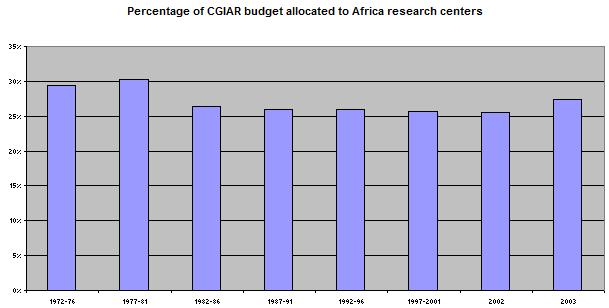One major question we’ve struggled to answer is: how do the different NGOs, local governments, and international global health partnerships work together to implement a given program?
For example, take mass drug administration of ivermectin to reduce onchocerciasis, one of our favorite programs. In Uganda, the African Programme for Onchocerciasis Control (APOC) works out of the World Health Organization (WHO). The Ugandan Ministry of Health is also involved. So are two nonprofits, The Carter Center and SightSavers International. What role does each play?
Steven Kasolo, the program officer responsible for SightSavers’ onchocerciasis program in Uganda, kindly agreed to speak with us on Tuesday morning. A summary (paraphrased highlights, not verbatim) follows. To us the key points to note are that:
- Program implementation is ultimately being done exclusively by (district-level) government officials.
- APOC, The Carter Center, and Sight Savers International provide funding and in some cases help with reporting, but do not have significant staff on the ground.
- Funds flow from APOC and the nonprofits to the district-level government officials. The funds are kept in separate accounts and come with separate reporting requirements, but otherwise are largely fungible (according to Steven). From a donor perspective, it doesn’t seem to matter much which of the three donation-accepting organizations (APOC, SightSavers, The Carter Center) the funds flow through, given that they’re funding this project.
Elie: What role does SSI [Sight Savers International] play in Uganda’s onchocerciasis program?
Steven: SSI has two roles. One is to help with the evaluation; the other is to actually fund the program. In Uganda, The Carter Center and SSI each contribute 25% of the total budget for onchocerciasis. TCC and SSI are responsible for different districts. The government contributes the rest. Right now, APOC (African Programme for Onchocerciasis Control) doesn’t fund Uganda’s programs.
Elie: When APOC was funding Uganda’s programs, how did that work?
Steven: The Ministry of Health [MoH] applies to APOC and APOC sends funds to the Ministry of Health. MoH sends money to districts and it’s all government employees that implement and document the program. Government employees send activities reports and budgets to me. I also make site visits to local villages (where the programs are being implemented). Then, I send reports on to the MoH and the MoH would send them to APOC.
Elie: Where, specifically, do SSI funds go when you fund an onchocerciasis program?
Steven: We send funds straight to the district. Funds are managed by government employees in the district. These are the same people who receive funds from the MoH. The actual treatments are distributed using unpaid, community volunteers, following the CDTI process.

